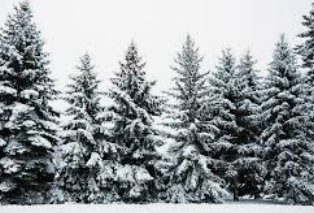
Winter Wilderness Survival: Edible Plants to Forage
When winter blankets the landscape, many might assume that food sources become scarce. However, nature offers a surprising array of edible plants, even amidst the frost. For those venturing into the wild during the colder months, having knowledge of these winter edibles can be crucial for survival. Here’s a guide to some of the most common and nutritious plants you can forage during winter.
1. Evergreen Trees
- Pine Needles: Rich in vitamin C, pine needles can be steeped in hot water to make a refreshing tea. They have a delightful, aromatic flavor and can help boost your immune system during the cold season.
- Spruce Tips: The young, tender tips of spruce trees are not only edible but also have a citrusy flavor. You can eat them raw or infuse them into syrup or drinks.
2. Root Vegetables
- Dandelion Roots: While often overlooked, dandelions provide nutritious roots that can be roasted and eaten or brewed into a coffee-like drink. They’re high in fiber and antioxidants.
- Burweed (or Salsify): This root vegetable can be found in various regions and is edible when cooked. It has a flavor reminiscent of oysters and can add variety to your winter meals.
3. Winter Greenery
- Chickweed: This hardy plant can survive snow and frost. It has a mild, grassy flavor and can be eaten raw in salads or added to cooked dishes.
- Mallow: Mallow leaves are edible and can be consumed raw or cooked. They’re packed with nutrients and can add a lovely texture to soups.
4. Bark and Twigs
- Cinnamon Bark: If you find cinnamon trees (Cinnamomum verum), the inner bark can be harvested and is edible. It can be dried and powdered for spices or steeped for tea.
- Willow Bark: While primarily known for its pain-relieving properties, willow bark can also be chewed on for a slight herbal flavor and medicinal benefit.
5. Wild Fruits and Nuts
- Hawthorn Berries: These berries often persist through the winter and are packed with antioxidants. They can be used in jams or eaten raw, though they are sometimes best after the first frost.
- Acorns: If you come across oak trees, acorns can be an excellent source of nutrition. They must be processed to remove bitterness from the tannins, but once leached, they can be ground into flour or eaten whole.
6. Seaweed (if near coastal areas)
- Kelp and Dulse: If you live near the coast, winter is a good time to forage for edible seaweeds. Kelp can be harvested and dried for use in soups and as a flavor enhancer, while dulse can be snacked on or used as seasoning.
Safety First
Before consuming any wild plant, it is critical to correctly identify it, as many plants can be toxic or harmful. Always consult reliable foraging guides or experts, and when trying something new, start with small quantities to ensure you don’t have an adverse reaction.
Conclusion
While winter may seem inhospitable, the wilderness still holds numerous edible treasures. With a little knowledge and preparation, you can enhance your survival skills and make the most out of your winter adventures. Remember, foraging is not only about sustenance; it’s a chance to connect with nature and appreciate the resilience of life during the cold months. Happy foraging, and stay warm!
